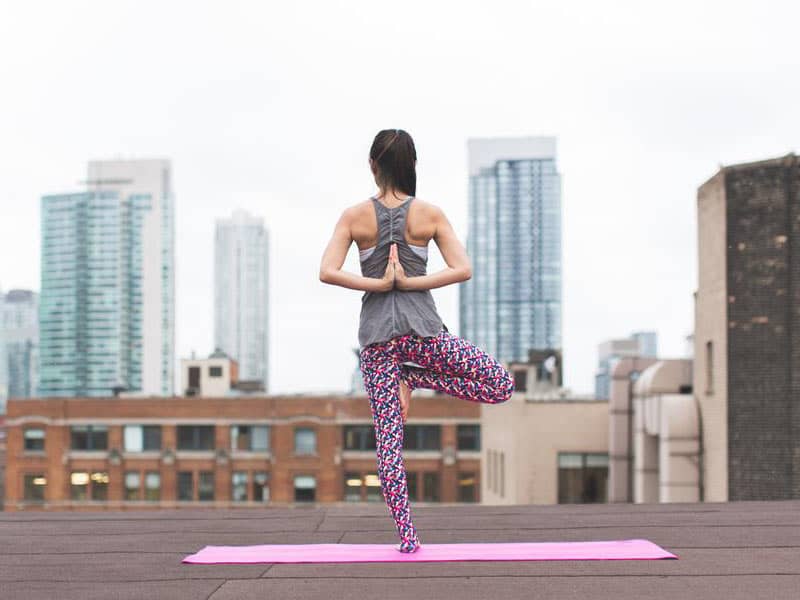 |
 |
 |
 |
|
|||
 |
"Some teachers emphasize the spirituality aspect of yoga; others may not bring it into play," says John Schumacher, the founder of the Bethesda, Md.-based Unity Woods Yoga Center, the country's largest Iyengar school.
What differentiates a yoga style is not necessarily that new positions have been created but how the mostly traditional postures are taught or sequenced, says David Ingalls, founder of Washington, D.C.'s Ashtanga Yoga Center. "One style may use postures slowly, another one quickly. One style might emphasize alignment; another the way you move from posture to posture," he says.
According to Larry Payne, author of "Yoga for Dummies" (IDG Books Worldwide Inc., 1999), "Some styles are safer for beginners, particularly older beginners. Ashtanga is the physical top of the line and is definitely for those under 35--max 40--unless they are professional athletes or dancers." Be careful to find the correct yoga style for your physical level, because choosing the wrong type can lead to injuries, he says.
To find a style that fits you, try a class and interview the teacher. Be candid about your physical problems, such as back pain or chronic injuries. Also verify a teacher's training. The Yoga Alliance in West Reading, Penn., sponsors a website with a state-by-state breakdown of its members, all of whom are required to have at least 200 hours of practice. In general, yoga classes run 90 minutes at studios, an hour at health clubs. Studios are the better bets to find teachers trained in a particular technique.
Here is a description of some popular yoga styles taught around the country:
Iyengar Iyengar is, so to speak, Jesuit yoga: precise and disciplined. Iyengar utilizes props such as straps and blocks to help practitioners hold a pose. A strap helps you slowly and safely stretch your leg if you lack flexibility. Say you can't sit comfortably cross-legged on the floor: A block placed under one or both thighs can help prop you up.
Precision rules in this yoga style. "Iyengar appeals to Type A people," says Schumacher. "Teachers provide detailed instructions so that people are clear about what to do as they move into a pose."
Anusara means “flowing with Grace,” “going with the flow,” or “following your heart" in Sanskrit. John Friend created this hatha yoga technique in the mid-1990s by unifying a Tantric philosophy of intrinsic goodness and a method of physical alignment he calls "Universal Principles of Alignment." The highest intention of Anusara is to align with the Divine and step into the flow of grace. On the mat, students are encouraged to be playful and light and to offer prayers for more beauty, love, and goodness in the world.
 |
 |
 |
 |
|
|||
 |
Power Yoga "Power Yoga," says Ingalls, "takes Ashtanga and changes it to a sort of gym format." While the name suggests it's a draw for the twenty-somethings, many baby boomers are loyal to this style. That's because the intensity of a Power Yoga class often depends on the instructor's guidance, and some classes don't feel as "powerful" as you'd imagine.
Viniyoga No props or sudden moves here. Viniyoga, which means "breath-synchronized movement," is gentle. Payne says it's popular with those over 35. Carefully sequenced postures are designed to ease the body into more difficult moves, such as headstands. Viniyoga focuses more on quieting the mind than scrutinizing body positions.
Kripalu Kripalu yoga focuses on three stages: postural alignment and breath coordination and movement; meditation and holding postures for lengthy moments; and a more spontaneous flow of both postures and meditation. The Lenox, Mass.-based Kripalu Center for Yoga & Health, where this approach was developed, is the largest Kripalu yoga center in the country.
Kundalini Release your serpent--or Kundalini--power! This is the Yoga of Awareness and emphasizes mental focus, breathing, mantras, as well as various hand positions. The style focuses using the trio of mind, body, and spirit to help clear out your subconscious and set you on the path of enlightenment.
Sivananda and Integral Yoga These yoga schools are more laid back than Iyengar and Ashtanga, says Payne. In addition to Sivananda's practice of the Sun Salutation, the style also features meditating on and chanting the "OM" mantra. Payne calls the mantra "the universal sound of God." To me, when a room of yoga practitioners chant together, God sounds like a hidden bass reverberating off the walls.
Integral Yoga is a close cousin to Sivananda. Swami Satchidananda gave the Woodstock crowd a small taste of Integral Yoga when he led them in chanting "OM" back in 1969, says Payne. The main focus is on meditation and deep relaxation. The Sivananda Yoga Vedanta Center in Manhattan is one of many centers nationwide set up by Swami Satchidananda to offer daily classes that initiate students into the style.
Yoga Isn't this a no-brainer? Not necessarily. Nonspecific yoga classes generally suggest that the teacher will use a blend of postures and stretches. One popular trend is to incorporate yoga postures and Pilates stretches. And in one more sign of yoga's commercialization, New York dancer Jonathan Urla actually trademarked the term Yogilates in 1997 to reflect this style. "Yogilates is currently in New York and the immediate surrounding areas, but look for us as we expand nationwide," says Urla.


